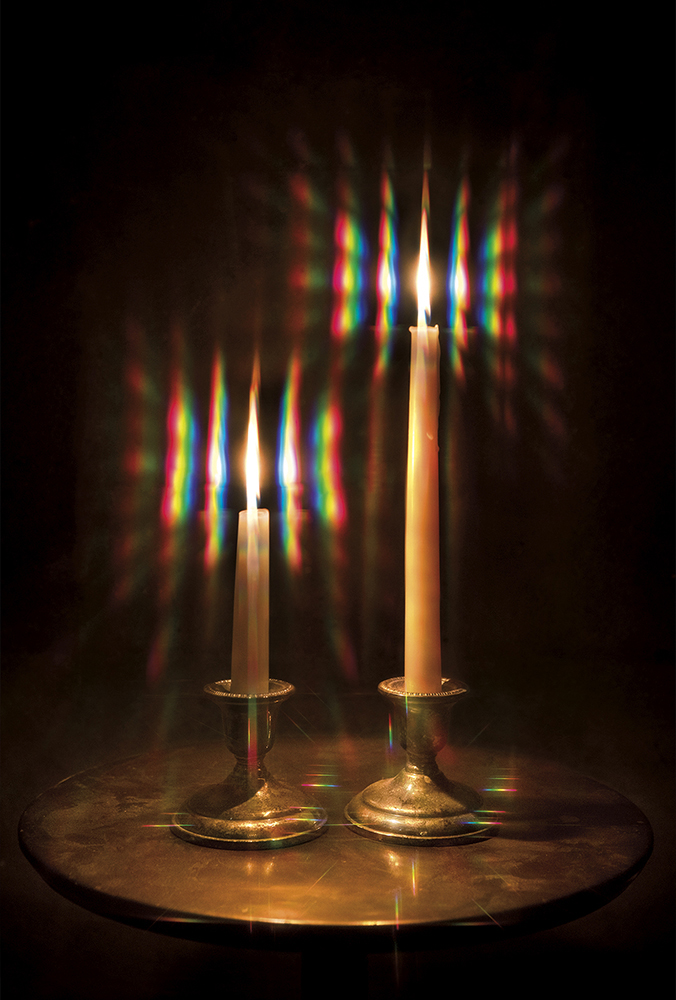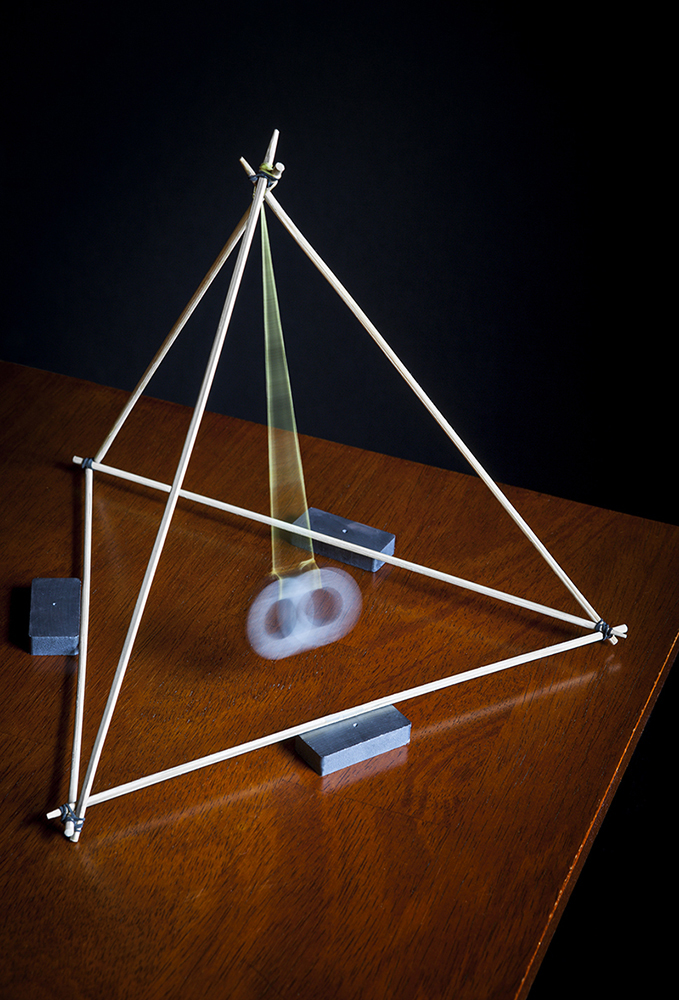Laura Skinner: The States Project: Kentucky
Laura Skinner and I have known each other for years but it wasn’t until we both were working together at a commercial photo studio, a few years ago, that I got to know her work better. I had always enjoyed her arresting portraits of family and friends, but it wasn’t until we started working together that I caught a look at her studies and playful still lifes. Her work has always had this stark tonal rang to them that I always enjoyed, so I was thrown for a loop when this new bright colorful experiments were put in front of me. I was eager to discuss the story behind these experiments as this was the first time I saw the artist’s hand, physically, in her work.
 Laura received a BA in literature from Kenyon College in 2005, and an MFA in photography from the Rhode Island School of Design in 2009. Her work has been featured in publications such as Wired Magazine, Lenscratch and American Photography, and in solo and group exhibitions in New York, California, Massachusetts, Illinois, Ohio, Vermont and Kentucky. Recently her work was featured in a solo exhibition at the SFO museum in San Francisco, a four-person show at Wayne State University called “Seeing is Understanding,” and group shows at the Filter Photo Festival and Cleve Carney Gallery in Chicago. She was also selected and interviewed by juror Kris Graves for issue #13 of Aint-Bad Magazine and featured in an 8-photo spread in the September 2018 print edition of Wired Italia. She lives and works in Louisville, KY.
Laura received a BA in literature from Kenyon College in 2005, and an MFA in photography from the Rhode Island School of Design in 2009. Her work has been featured in publications such as Wired Magazine, Lenscratch and American Photography, and in solo and group exhibitions in New York, California, Massachusetts, Illinois, Ohio, Vermont and Kentucky. Recently her work was featured in a solo exhibition at the SFO museum in San Francisco, a four-person show at Wayne State University called “Seeing is Understanding,” and group shows at the Filter Photo Festival and Cleve Carney Gallery in Chicago. She was also selected and interviewed by juror Kris Graves for issue #13 of Aint-Bad Magazine and featured in an 8-photo spread in the September 2018 print edition of Wired Italia. She lives and works in Louisville, KY.
Experimental
Images from the series “Experimental” are based on science experiments found on the Internet and in elementary school science books. Most of these demonstrations are aimed toward young children, and are designed to teach simple but fundamental scientific principles. I adapted and performed more than a dozen experiments for the camera.
The images demonstrate concrete principles and ideas: the density of salt water versus fresh water, the reaction of certain metals to heat, the way light responds to different surfaces. They also seek to recreate, on a small scale, directly observable phenomena, such as the formation of a tornado and the appearance of a galaxy in space.
As illustrative as the images are, they remain mysterious. They monumentalize and obscure these principles simultaneously. They are both forthright and totally unreliable. Through smoke and mirrors, as well as photography’s tenuous relationship with “truth,” they generate more questions than answers, even as they seek to represent science as a form of the absolute.
Ultimately, science can tell us the how of the universe, but never the why. I hope to place this series of images somewhere in the gap that falls between these two cardinal questions.
James R. Southard: Before we get into your latest work, I am interested to know more about what got you interested in photography. What drew you to it and what were some of the subject that first interested you?
Laura Skinner: I come from a family of writers, so growing up I spent most of my time reading, writing short fiction, and planning some sort of career in the literary arts. I went to college as an English major, but my first semester I took an introductory photography course and really connected with the medium. My professor, Marcella Hackbardt, showed us the work of Diane Arbus, Cindy Sherman, David Hilliard, Duane Michals and many others, and explained how a complex, nuanced narrative could be communicated in a single photograph. Up to that point I thought of photography in terms of journalism and documentation, so this was a new perspective that felt very compatible with my interest in fiction and creative writing. I took all of the photography electives Marcella offered and changed my focus completely to photography after graduation.
Fast forward to your current practice. When looking at your series, experimental, I find there a great deal of performance with the work. You are documenting the act of discovery or the conclusion of your actions. When creating this photographs, what is your method of choose what stage is photographed? Some images are simply showing the final result while others show the artist’s hand still in the act of making. I am curious to what choices are made in all of stages of these experiments that controls when the image is made.
The challenge from the outset was finding experiments that worked from a scientific and an aesthetic standpoint simultaneously. The series represents only a small fraction of the experiments I attempted – the vast majority failed. I am an absolute amateur when it comes to applied science, but the process of trial and error and discovery that stemmed from my own ignorance was part of the project’s thesis. The obvious downside to not having an expert involved was that I progressed much more slowly and with much more failure and frustration. I didn’t have any outright disasters (luckily) but I did make a lot of huge messes.
Since you are relying so much on other elements for the photograph to succeed, have you run into any disasters in the lab? What kinds of challenges have you had to overcome before you ever snap the shutter.
The challenge from the outset was finding experiments that worked from a scientific and an aesthetic standpoint simultaneously. The series represents only a small fraction of the experiments I attempted – the vast majority failed. I am an absolute amateur when it comes to applied science, but the process of trial and error and discovery that stemmed from my own ignorance was part of the project’s thesis. The obvious downside to not having an expert involved was that I progressed much more slowly and with much more failure and frustration. I didn’t have any outright disasters (luckily) but I did make a lot of huge messes.
I am interested to know more about your experience in Kentucky and New England. You know both intimately and I would be curious to know what you’ve experienced in photographing here and there as well as what you’ve noticed in the photographic community in each.
The biggest difference, in my experience, is the pace. When I was in New England I felt pressured to produce work quickly, disseminate it, and move on to the next project. Kentucky’s pace has always felt slower and more relaxed to me, which is a big part of its appeal. I have time and space to dedicate to my photographic practice. On the other hand, a smaller community and less competitive atmosphere can inhibit as much as it can help. I struggle to find the balance sometimes.
Posts on Lenscratch may not be reproduced without the permission of the Lenscratch staff and the photographer.
Recommended
-
Salua Ares: Absense as FormNovember 29th, 2025
-
Ricardo Miguel Hernández: When the memory turns to dust and Beyond PainNovember 28th, 2025
-
Pamela Landau Connolly: Columbus DriveNovember 26th, 2025
-
KELIY ANDERSON-STALEY: Wilderness No longer at the Edge of ThingsNovember 19th, 2025
-
Jackie Mulder: Thought TrailsNovember 18th, 2025






































































